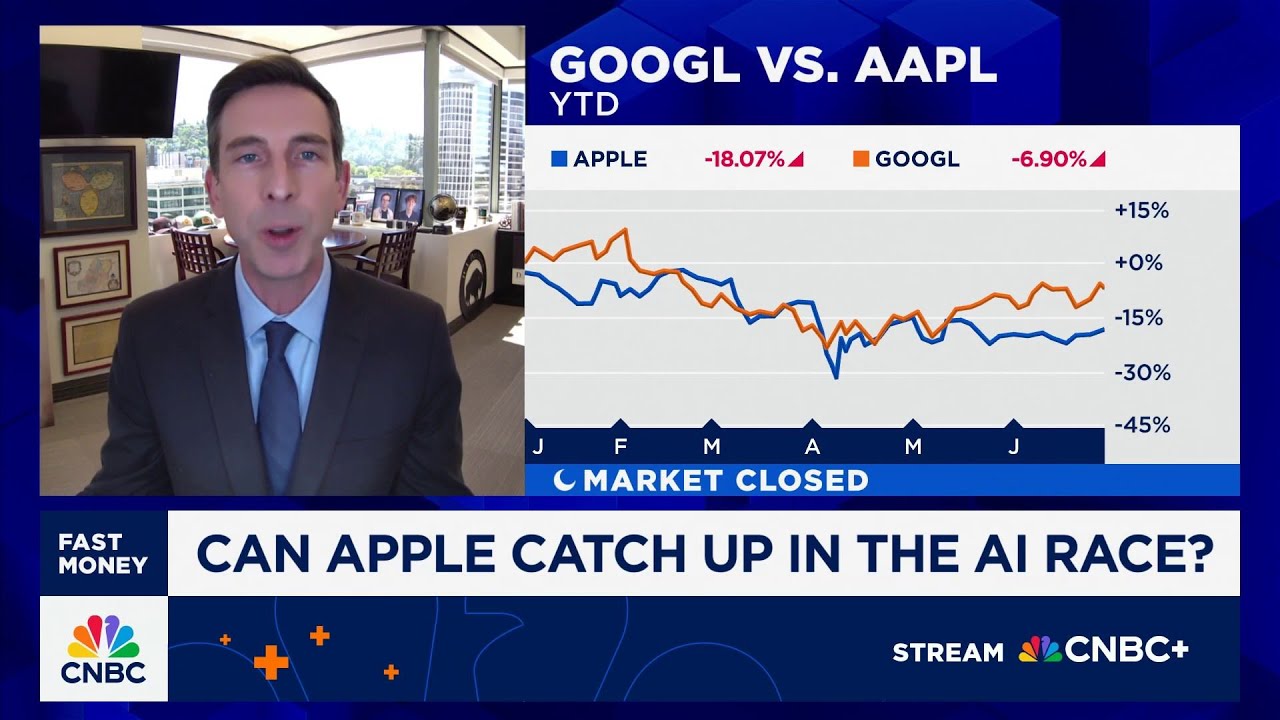Gil Luria highlights that Apple’s strategy to partner with existing AI providers allows the company to integrate advanced AI features without the high costs and risks of developing proprietary models, leveraging its strong consumer base effectively. He also notes that while AI enhancements will support steady product improvements, they are unlikely to trigger a major upgrade surge, and that regulatory challenges are encouraging Apple to diversify its AI partnerships to maintain competitiveness and compliance.
In the discussion, Gil Luria, head of technology research at D.A. Davidson, addresses concerns about Apple’s AI capabilities and the company’s strategy moving forward. He acknowledges that Apple has struggled to develop a competitive AI model in-house, particularly for enhancing Siri. However, Luria sees Apple’s potential move to partner with existing AI providers as a smart alternative, allowing the company to leverage advanced AI technology without investing billions in development. This approach enables Apple to maintain its strong consumer relationships while integrating top-tier AI models from the market.
Luria emphasizes that Apple’s ownership of the consumer base is a significant advantage. Instead of competing directly in the highly competitive and complex AI model development race—dominated by several American and Chinese companies—Apple can simply select the best AI solutions available to enhance its products. This strategy not only saves costs but also ensures that Apple can offer improved AI features without the risks and challenges of building proprietary models from scratch.
Regarding the impact of AI integration on Apple’s product cycles, Luria suggests that while AI enhancements will contribute positively, they are unlikely to trigger the kind of massive “supercycle” upgrade wave that some investors had hoped for. Instead, AI features are being introduced gradually, with improvements like call transcription and email summaries appearing on newer iPhone models. These incremental upgrades may support steady iPhone sales, particularly with the anticipated iPhone 17 release, but they won’t cause a dramatic surge in demand.
The conversation also touches on the broader regulatory environment, particularly an antitrust case Apple recently failed to dismiss. This legal challenge raises questions about Apple’s dominant position in controlling consumer access and partnerships. However, Luria argues that this situation actually puts Google at a disadvantage. Due to antitrust concerns, Apple cannot simply default to Google for AI integration in Siri, pushing Apple to diversify its AI partnerships and demonstrate to regulators that it is fostering competition rather than maintaining exclusive ties.
Ultimately, Luria views Apple’s potential AI partnerships as a pragmatic and strategic move that benefits both the company and consumers. By collaborating with multiple AI providers, Apple can offer cutting-edge AI features while navigating regulatory scrutiny and avoiding costly internal development. This approach positions Apple to remain competitive in the evolving AI landscape without overextending itself financially or legally.
